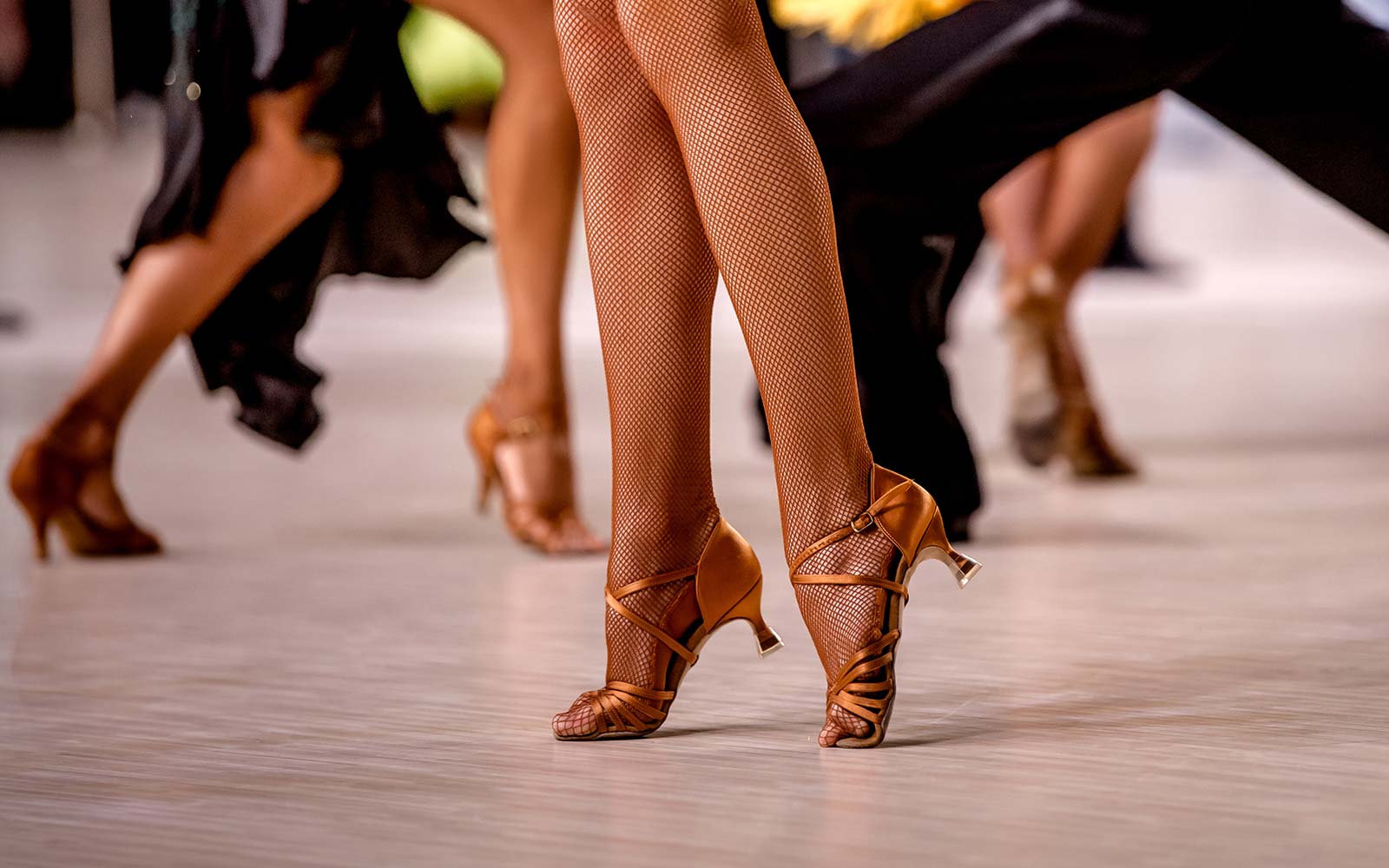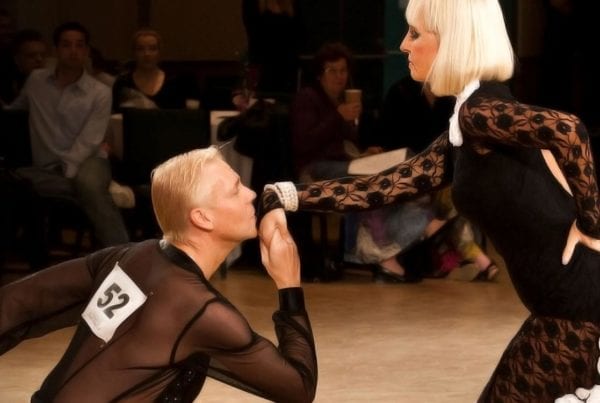All Latin dances are full of turns, spirals and spins. Done well, whether slow or fast, these are beautiful. Let’s take a look at how to create that kind of quality.
The setup
The most important quality in doing great turns and spins is to be on balance. Just like spinning a top, if you aren’t lined up properly in relation to gravity, the result won’t be pretty. Being lined up means having the head and spine in one clean vertical line over the standing foot. And since you’ll be using the ball of the foot to create your turn, make sure your weight is over the ball of the foot, not the center of the foot or the heel. Back straight. Rib cage projected forward rather than collapsed. Waist area collected inwards. Head lined up with the spine.
Keep in mind that it will be the area roughly at your shoulder that needs to be lined up with the ball of your foot. So your center line corresponding to your head will be lined up over the inside edge of your foot, not over the center of the ball. This allows you to be perfectly centered, since your shoulders extend left and right of your head, creating a proper center of balance.
The foot you aren’t standing on needs to have pressure into the floor. You can’t create good turns if you are only using one foot as your balance point. Instead, you are using two feet, even though you are standing only on one of them. To create this pressure, push into the ball of the foot you aren’t standing on, with both knees completely straight.
Finally, it’s critical to keep the eyes up. Even if your head is up, looking down at the floor changes your balance enough that it will affect your turn.
The Turn
To create the turn, it’s not enough to just turn and step. You first need to create energy in order to accomplish your turn or spin. And if you are trying to move horizontally during that action, you’ll just be going off your center of balance, destroying your ability to turn.
What you’ll want to practice is using the balls of both feet to create your turn, without moving your body sideways. One of the most common reasons that dancers can’t do good turns is that they attempt to move from one foot to the other during the turn. Any horizontal movement during your turn impacts your balance, making it challenging to complete the turn effectively.
Another common problem is to use the wrong body parts to create the turn. Even if they try to turn without moving the body, turning the shoulders will throw you off balance. Yet this is a very common mistake. Turns need to happen from the core. In fact, we are turning the spine to initiate the turn. You can think of turning the belly button if you like, as this is the external body part closest to the spine.
For spot turns or switch turns, collect the ankles underneath your body before you send the foot forward. The foot should not move forward until you are facing the direction you want that foot to be placed. Don’t try stepping while you are still turning, as that will cause you to over rotate the body, affecting your balance.
For spirals, push into both feet as you turn, using the balls of both feet to power the turn. Halfway through your spiral, open space for the body in front to avoid falling over as you finish the turn. An easy way to think of that is to let the back hip settle halfway through the turn.
Use of the Head
Another common problem with turns is that dancers turn the head at the same time as they turn the body. This slows down your turn, robbing you of power. Instead, let the head be the last thing to begin turning and the first thing to arrive at the final direction. This not only creates a more dynamic rotation, but it also helps you control the momentum of the turn.
Work on your turns by practicing them slowly at first, working on the technique. As you get better at this, increase the amount of turn and the speed. Before long, you’ll be doing fast, snappy turns with style.














